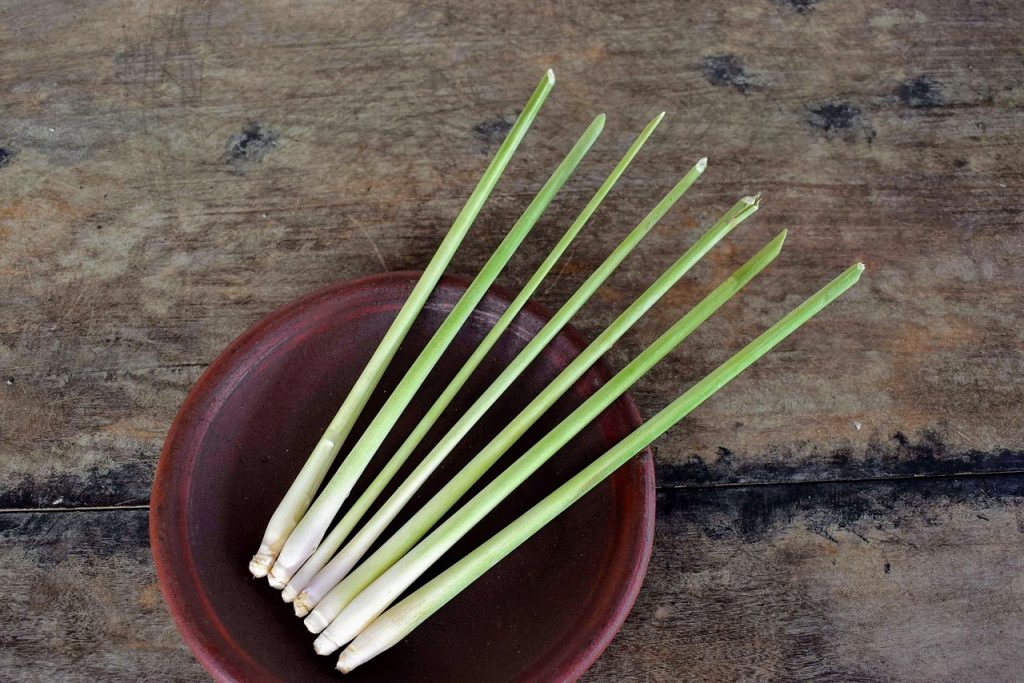With its delightful citrus‐flavour and its array of potential health benefits, lemongrass tea is a beverage well‐worth getting to know better. Lemongrass tea is used in many cultures around the world—celebrated for its refreshing taste and versatility. Naturally dairy‐free, it is suitable for those with dairy allergies or intolerances. Whether you’re sipping it as a hot tea on a cold evening or enjoying it as an iced tea on a sunny afternoon, this herbal tea is sure to charm. In this guide, let’s delve deeper into how lemongrass tea may boost your health, how to make lemongrass tea at home, and more. Plus, the prep time for making lemongrass tea is minimal, making it a quick and easy beverage to prepare.
What is Lemongrass Tea and Why is it Beneficial?

Understanding the Basics of Lemongrass Tea
Lemongrass tea is an herbal infusion made from the leaves or stalks of the lemongrass plant (typically Cymbopogon citratus or Cymbopogon flexuosus) (Memorial Sloan Kettering Cancer Center, n.d.). Research indicates that the plant contains bioactive compounds such as flavonoids, phenolic compounds, terpenoids and essential oils, which may underpin different biological activities (de Oliveira et al., 2011). Indeed, lemongrass sends off a lemony scent when the stalks are bruised or chopped (de Oliveira et al., 2011). Dried leaves are often used for ease of storage and convenience.
Health Benefits of Sipping on Lemongrass Tea
Drinking lemongrass tea isn’t just about flavour—there are several reported benefits, although many findings are preliminary and require more human research.
- Blood pressure & cardiovascular support: A review of animal and human studies reported anti-hypertensive effects of lemongrass extracts. For example, water extracts in rats reduced total cholesterol, LDL and improved antioxidant status; human trials showed reductions in systolic and diastolic blood pressure with regular consumption (Moreira et al., 2010; Ekpenyong, 2018). PMC+2Healthline+2
- Anti‐inflammatory/antioxidant effects: Compounds such as citral and geraniol in lemongrass may modulate inflammation and oxidative stress, which are implicated in chronic conditions like heart disease and metabolic disorders. Healthline+2Tua Saúde+2
- Oral health and antimicrobial effects: Some studies of lemongrass essential oil (rather than tea) suggest benefits for gum health and microbial control (e.g., lower plaque, anti-gingivitis) (Nall, 2024). Medical News Today+1
- Digestive and traditional uses: Historically, lemongrass has been used to support digestion, relieve nausea, treat headaches and muscle cramps, and as an antispasmodic (de Oliveira et al., 2011). PMC
That said, it’s essential to emphasise that many of the health claims rely on extracts, essential oils or animal/in vitro studies rather than large, high-quality human trials. For example, a study of lemongrass tea in humans found shifts in acid-base balance and electrolytes after 10 and 30 days of drinking infusions from 2–8 g leaf powder (Ekpenyong, 2018). foodscijournal.com
Clarifying Common Myths and Misconceptions
While the health benefits of lemongrass are promising, certain claims in popular media go beyond the evidence. For instance:
- The suggestion that lemongrass tea will cause weight loss or detoxification is largely unsupported; diuretic effects may lead to temporary water loss but not meaningful fat loss. Healthline+1
- Some articles assert it will boost red blood cell levels – there is no robust evidence in human trials confirming this for ordinary consumption of tea.
- As with any herbal product, benefits require regular and consistent use and appropriate preparation—but even then, they should not substitute for medical care or proven therapies.
How to Make Lemongrass Tea from Fresh Lemongrass?
Choosing the Right Fresh Lemongrass for Your Tea
When planning to make lemongrass tea, selecting fresh stalks is key. Look for lemongrass stalks that are firm, pale yellow-green in appearance, and have a fragrant, lemony aroma when bruised— this indicates freshness and good flavour.
Step-by-step Guide to Brew Fresh Lemongrass Tea
Here is a simple method to make lemongrass tea:
- Clean and roughly chop your lemongrass stalks (about 1-2 inches long pieces).
- Pour water into a pot and bring it to a boil.
- Add the chopped lemongrass (and optionally some grated ginger) to the boiling water. If you prefer, you can also add tea leaves (green or black) for a hybrid brew.
- Cover the pot and let it simmer for about 5-10 minutes to infuse the flavours.
- Strain the liquid into a cup, add your preferred sweetener (honey, sugar, etc.) or a splash of lime. Serve hot, or chill for iced tea.
Tips and Tricks for Enhancing Lemongrass Tea Flavor
- Try an infusion of lemongrass and green tea for added antioxidant benefits and flavour contrast.
- Or blend lemongrass with chamomile for a calming evening brew.
- Use sweeteners like honey or sugar to taste.
- Add a splash of lime juice for tang, or a small amount of lemongrass essential oil strictly (for flavour only, not therapeutic claims) if you know what you’re doing (though caution is required).
- Fresh vs dried lemongrass will yield different flavour intensity (see next section).
Can You Make Lemongrass Tea with Dried Lemongrass or Tea Bags?

Understanding the Use of Dried Lemongrass in Tea Making
Yes—you can use dried lemongrass to make tea. The brewing process is similar to fresh lemongrass, though dried stalks or leaves may deliver slightly more concentrated flavour (though evidence in human health effects is limited). For convenience, dried lemongrass is a valid option.
How to Brew Lemongrass Tea Using Tea Bags
Using lemongrass tea bags is a convenient alternative. Simply steep the tea bag in a cup of hot water for 5 minutes (or more depending on your taste). Add sweetener or ice as desired and enjoy.
The Difference Between Fresh and Dried Lemongrass Tea
- Fresh lemongrass tends to provide a lighter, more delicate citrus flavour with green-herbal notes.
- Dried lemongrass usually produces a more robust, slightly more intense flavour profile and may steep more quickly.
- From a health standpoint: because most research has been done on extracts rather than typical tea infusions, one cannot confidently say one is much “better” than the other in terms of health outcomes—tone expectations appropriately.
What are Some Delicious Tea Infusions with Lemongrass?
Refreshing Lemongrass and Green Tea Fusion
Boost both the flavour and potential benefits by infusing lemongrass with green tea. You get the antioxidant properties of green tea plus the citrus/herbal flavour of lemongrass. Note: green tea contains caffeine, so consider if that matters for you.
Ginger and Lemongrass Tea for Cold Evenings
For a warming and soothing brew, combine fresh ginger root with lemongrass stalks. The spiciness of ginger pairs nicely with the citrusy note of lemongrass—ideal for chilly evenings.
Relaxing Chamomile and Lemongrass Herbal Tea Infusion
Blend chamomile flowers (known for their calming effect) with lemongrass to create an aromatic, calming drink—perfect for winding down. Note that while lemongrass shows some sedative potential in animal studies, human evidence is limited (Memorial Sloan Kettering Cancer Center, n.d.). Memorial Sloan Kettering Cancer Center
How to Store Lemongrass Tea for Best Flavour and Potency?
Tips for Storing Freshly Brewed Lemongrass Tea
Once brewed, you can refrigerate the tea and serve it chilled over ice for a refreshing iced version. If stored appropriately (in a sealed container, cooled quickly), it should stay fresh and flavourful for up to a week in the fridge.
Understanding the Shelf‐life of Dried Lemongrass and Tea Bag
Dried lemongrass and tea bags—if kept in a cool, dry, dark place in an airtight container—can last many months (often around 1-2 years) though flavour and aroma gradually diminish. The “few more minutes to two years” phrase is misleading; realistically you are looking at many months to about a year for best quality.
How to Keep Your Lemongrass Tea Fresh and Potent
For best results:
- Store dried lemongrass or tea bags in an airtight container, away from light and heat.
- Keep fresh stalks refrigerated and use them within a few days for optimal flavour.
- For brewed tea, cool rapidly and store in the fridge if not consumed immediately.
- When using fresh stalks, blanching or cutting just before use preserves aroma.
Q & A Section
Q: What are the main benefits of drinking lemongrass tea?
A: Drinking lemongrass tea may offer several health benefits. These include potential support for cardiovascular health (e.g., blood pressure reduction), antioxidant/anti‐inflammatory action, and antimicrobial/oral‐health benefits. However, many claims (e.g., boosting red blood cells) lack strong human evidence. It is low in calories, caffeine-free (if brewed herbal style), and naturally dairy‐free.
Q: How can I incorporate leftover lemongrass into my lemongrass tea recipe?
A: Yes—if you have leftover stalks or leaves you can still use them. Chop them and add into your boiling water and simmer for ~5 minutes. The flavour may be slightly weaker, so you might need a bit more stalk length or steep time.
Q: Can you suggest a refreshing lemongrass tea blend for the warm summer months?
A: Absolutely. For summer: brew lemongrass + a few slices turmeric or ginger, cool the infusion and serve over ice. You may also add a splash of fresh lime or mint leaves for extra refreshment. Both hot and iced versions work.
Q: Is there a specific way to use lemongrass in a tea lemongrass recipe?
A: Yes—either fresh or dried lemongrass leaves/stalks can be used. Crush or bruising the stalk helps release essential oils and aroma before steeping. Pour freshly boiled water, cover, steep for about 5–10 minutes, then strain. Serve hot or iced.
Q: Are there any reader interactions or feedback on using lemongrass in a ginger tea recipe?
A: Yes—many readers report that adding lemongrass to their ginger tea enhances the flavour (introducing a citrusy note) and makes the brew feel more refreshing, balancing the spiciness of ginger. While anecdotal, it’s a popular combo.
Q: How can I buy lemongrass for my tea recipe?
A: You can buy fresh lemongrass stalks in the produce section of many grocery stores (especially those with Asian or tropical sections) or health-food stores. Dried lemongrass (loose or in tea bags) is widely available online and in specialty herb stores. For authenticity, you may look for Cymbopogon citratus. When possible, choose organic to minimise pesticide exposure and ensure freshness.
Q: Can I mix lemongrass with other types of teas, like chamomile tea or “detox” teas?
A: Yes—lemongrass blends well with various teas. Combining lemongrass with chamomile can yield a soothing infusion; mixing with “detox” herbal blends may add flavour and mild diuretic support. Just be careful of combining multiple diuretic herbs if you have underlying health conditions.
Q: Is it possible to grow lemongrass at home for making lemongrass tea?
A: Yes—lemongrass is a tropical plant but can be grown in a pot at home in temperate zones (indoors or in a heated greenhouse). It’s relatively easy to care for (sunlight, good drainage, regular watering) and gives you a fresh supply of stalks for tea.
Q: Are there any precautions when drinking lemongrass tea?
A: Yes. While lemongrass tea is generally considered safe for most people when consumed in normal food amounts, some precautions apply:
- There is limited data on safety in pregnancy and breastfeeding; some compounds in lemongrass have shown effects on foetal development in animal studies. Memorial Sloan Kettering Cancer Center+1
- It may have diuretic effects, and in one study changes in acid-base balance and kidney function parameters were noted after high doses over 30 days (Ekpenyong, 2018). foodscijournal.com
- People with kidney disease, low blood pressure or on diuretics should consult their healthcare provider. Healthline+1
- Avoid consuming large amounts of essential oils internally unless under professional guidance—the essential oil is far more concentrated and can cause adverse effects.
Q: Can I use lemongrass essential oil in making lemongrass tea?
A: It is not recommended to use essential oil in place of whole leaves/stalks for tea because the oil is too concentrated and may cause side effects if ingested in large quantities. Use whole stalks or leaves. This aligns with guidance from integrative medicine sources. Memorial Sloan Kettering Cancer Center
For detailed instructions on how to prepare lemongrass tea, please refer to the recipe card below. If you’re interested in exploring more recipes featuring lemongrass and other herbal teas, check out our collection for more inspiration.
References
de Oliveira, M. R., et al. (2011). Scientific basis for the therapeutic use of Cymbopogon citratus, Stapf (lemongrass). Journal of Ethnopharmacology, 151(1), 1-15. https://doi.org/10.1016/j.jep.2013.02.015 PMC
Ekpenyong, C. E. (2018). Lemongrass tea consumption and changes in acid–base balance and electrolyte homeostasis. Archives of Food and Nutrition Sciences, 2(2), 041-051. https://doi.org/10.29328/journal.afns.1001016foodscijournal.com
Nall, R. (2024, October 21). Lemongrass tea: Benefits, uses, and recipe. Medical News Today. https://www.medicalnewstoday.com/articles/321969 Medical News Today
(“Lemongrass tea: 10 potential health benefits…”) Healthline. (2024). https://www.healthline.com/health/food-nutrition/lemongrass-tea Healthline
(Lemongrass health benefits for mouth, etc.) WebMD. (2024). https://www.webmd.com/diet/lemongrass-health-benefits



